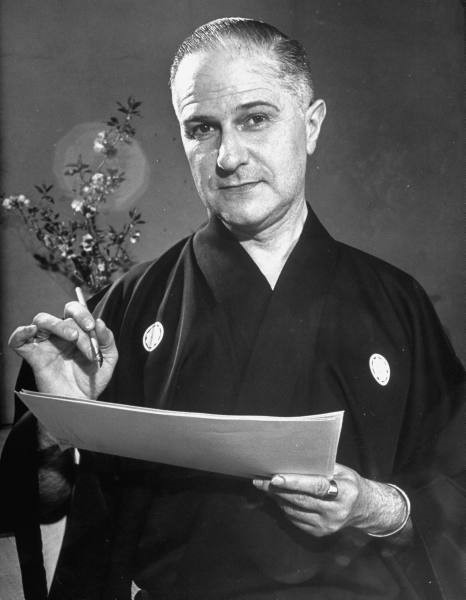
1946 Life Magazine photo taken by Alfred Eisenstadt
The life of Paul Jacoulet
Paul Jacoulet (1896-1960) was a remarkable figure. His life was a fascinating blend of Eastern and Western influences, marked by artistic innovation and cultural immersion. Born in Paris at the end of the 19th century, Jacoulet moved to Japan at the age of three when his father accepted a teaching position in Tokyo. This early relocation set the stage for a life deeply intertwined with Japanese culture and language. Growing up in a cosmopolitan household in Tokyo, Jacoulet was exposed to a diverse mix of Western and Japanese elite from various fields. At eleven, he made his only visit to Paris, where he encountered works of European masters.
Upon returning to Japan, he briefly studied oil painting under Seiki Kuroda at the White Horse Institute, then the center of Western modernist painting in Japan.However, Jacoulet’s artistic trajectory took a decisive turn when he encountered a woodblock print by Utamaro Kitagawa, igniting a lifelong passion for ukiyo-e, the traditional Japanese woodblock printing technique. He was later introduced to renowned traditional Japanese painters Terukata and Shōhen Ikeda, under whom he honed his skills. Jacoulet’s interests extended beyond visual arts. In his teens, he developed a keen interest in gidayu, a traditional Japanese musical form. He also became an avid butterfly collector, purportedly amassing over 30,000 specimens.
The artist came of age during the Taisho era, a period of social change and liberal politics in Japan. However, World War I and the 1923 Great Kanto Earthquake brought significant changes to his life and the broader Japanese society. A defining moment in Jacoulet’s artistic career came when he was 35, as he embarked on travels across Micronesia. These journeys, reminiscent of Gauguin’s, provided inspiration for much of his later work. His travels extended across Asia and the Pacific, capturing the lives of people in Korea, Manchuria, China, and regional Japan. In 1935 Jacoulet established the Jacoulet Institutes of Prints, collaborating with Japanese carvers and printers to produce his woodblock prints. Initially well-received by Japanese critics, his work later found its primary audience among Westerners, including notable collectors like General Douglas MacArthur’s wife and the actor Edward G. Robinson. Despite his artistic success, Jacoulet faced personal challenges. He was openly gay, which likely led to his denial of entry to the US in the 1950s. Nevertheless, he formed a close-knit family, adopting the daughter of one of his Korean assistants. Jacoulet passed away in 1960 at the age of 64 in Karuizawa, Japan, after battling chronic health issues. Although his career was at a low point at the time of his death, interest in his work resurged in the 1980s, leading to major exhibitions worldwide.Today, Paul Jacoulet is remembered as a unique figure who bridged Eastern and Western artistic traditions, leaving behind a legacy that continues to intrigue and inspire art enthusiasts and scholars alike.